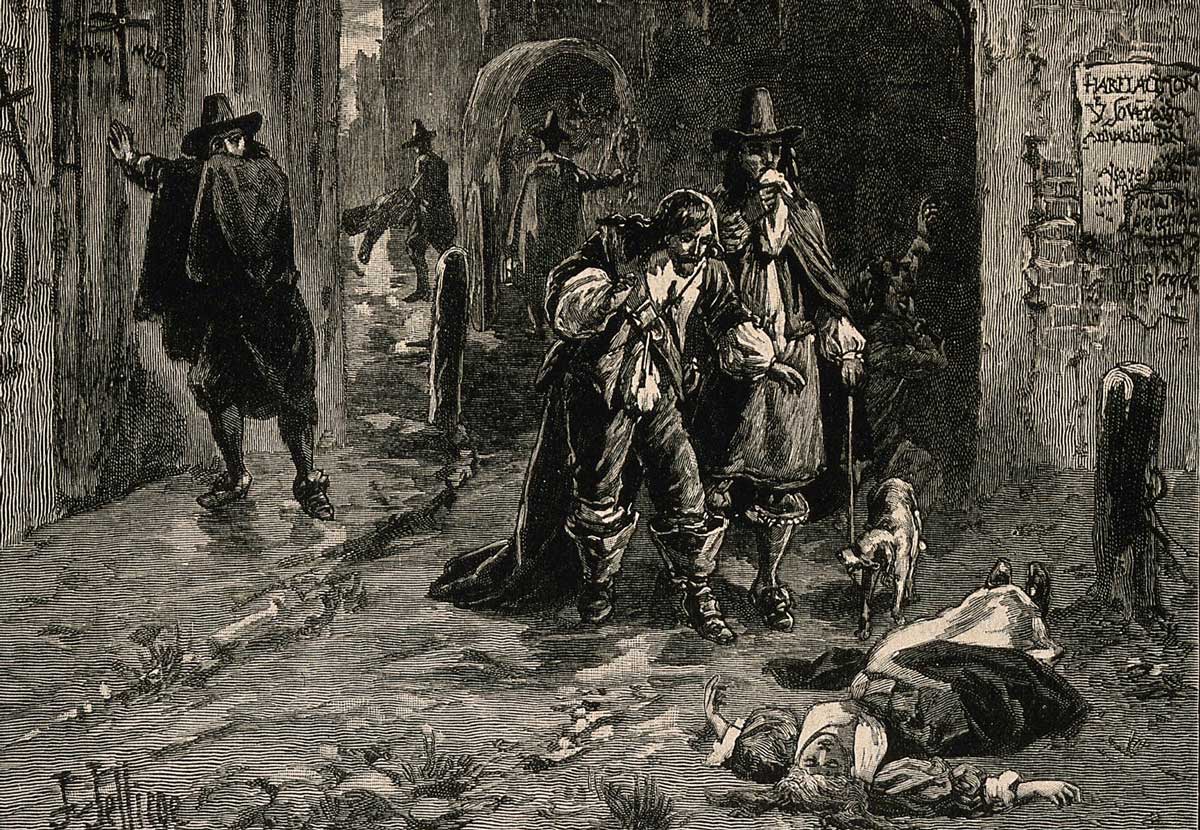Pandemics and Plagues are pretty common sci-fi horror tropes, either as the primary source of terror, plot elements, or the backdrop against which the story is happening. The plagues can be many things like the bubonic plague in Mary Shelley’s 1826 sci-fi horror book The Last Man, a weaponized influenza as told by Stephen King in The Stand, a bacterial outbreak in I Am Legend by Richard Matheson, etc. Symptoms may vary, but whatever they might be, the illnesses are often deadly or at least leading to inhumane conditions.

In sci-fi horror (or any sci-fi), when a plague is important to the narrative, its plausibility must be considered. With few exceptions, the disease is described in such a way that it falls within the realm of believability–the causes, symptoms, treatments, cure, effects on the society, and so on. This is to prevent the nature of the disease itself from becoming mere fantasy; it might still be entirely fiction, but at least there’s a case to be made for its existence to begin with.
Still quite fresh in memory is the worldwide ruckus surrounding the emergence, public health issues, and terrible societal effects of the COVID-19 pandemic. The WHO first declared it as a pandemic in March 2020 and officially announced its end in May 2023, after over 765 million of reported cases of infection and nearly 7 million related deaths. During the peak of the pandemic, when most of the world was under government-enforced lockdown and social distancing, people flock to science fiction as a measure of escapism. Amid the confusion of it all and the conflicting messages from politicized news sources, sci-fi literature became more than mere reading materials to kill the time in isolation, but a true entertainment in irony. Fans quickly pointed out that the genre was (and still is) effective at reflecting contemporary concerns and delivering crushing social commentary about the state of humanity in the face of perilous circumstances.
In print and e-book media, we saw a massive sales surge of novels about pandemics, such as The Plague (1947) by Albert Camus, The Stand (1978) by Stephen King, and Station Eleven (2014) by Emily St. John Mandel. The 1981 novel titled “The Eyes of Darkness” by Dean Koontz, which specifically mentions a bioweapon known as Wuhan-400, increased in sales by a massive 3,000%.
While the sales surge might be different, the escapism part has been true throughout history. One of the earliest examples of such cognitive estrangement takes us back to the very foundation of sci-fi horror as a mixed genre with Mary Shelley’s The Last Man, published in 1826. It might not enjoy the same fanfare as her most popular work, Frankenstein, but the novel really was a social commentary of its time.
The Last Man is a plausible concept at the time of the writing. The 19th century saw the avalanche of the first cholera pandemic that killed millions of people in across South Asia, Southeast Asia, the Middle East, Eastern Africa, and the Mediterranean coast over the course of 7 years. An outbreak of typhus also took Ireland by storm from 1816 to 1819, killing roughly 65,000 people.
Shelley’s description of the plague in The Last Man was rather vague, as it has attributes of a variety of actual diseases, including scarlet fever, bubonic plague, and cholera. It’s also said to spread in terms of miasma, but that’s probably because germ theory hadn’t been accepted yet. As the germ theory became more clearly understood, sci-fi horror was quick to adopt the consensus. Among the earliest examples was H. G. Wells’ The Stolen Bacillus (1894), which talks about the use of Asiatic cholera as a biological weapon; again, it’s a matter of cognitive estrangement–a product of its time, delivering social commentary.
It would take 60 years before the connection between germ theory and the walking undead was made. Richard Matheson firmly established vampires, zombies, or other monsters of similar nature in the 1954 novel I Am Legend. The novel wasn’t the first sci-fi horror book to do so, but it delivered a refreshing and enduring take on the old archetype of vampirism.
We think plagues and pandemics offer much to explore when used as themes in sci-fi horror stories. And it makes sense that people seem to associate those stories with predictions of what might happen in the future or how poorly humanity would fare against novel infectious lethal diseases, considering our not-so-good track record in dealing with actual pandemics in the past. After all, sci-fi horror relies heavily on the audience’s speculative mind and a pretty big leap of extrapolation to turn the imaginative into something believable. Science fiction itself should not stray too far from reality, but it almost always features a certain disruptor or an unprecedented event as a gateway to link reality to the make-believe world. The disruptors can be anything like time travel, alien invasion, sentient computers, genetically engineered viruses and bacteria, widespread nuclear radiation, and so forth.
What books and films have the most accurate depiction of plagues and pandemics? What’s your most favorite sci-fi horror book about the Black Death? We’d love to hear from you.
Other Things You Might Want to Know
What exactly is the plague in Mary Shelley’s The Last Man (1826)?
The plague isn’t described in definite terms in the novel. It’s a mysterious and contagious disease that spreads all over the world, driving humanity to near extinction. Also, the novel doesn’t delve deep into the plague itself because the main story concerns how the plague and the decimation of the human population affect the survivors emotionally. Everything builds up to the eventual inevitability that the protagonist, Lionel Verney, ends up as the last man on Earth.
Some films about plagues and pandemics?
The Masque of the Red Death (1964)
- The Andromeda Strain (1971)
- 12 Monkeys (1995)
- Outbreak (1995)
- 28 Days Later (2002)
- I Am Legend (2007)
- The Happening (2008)
- Blindness (2008)
- Quarantine (2008)
- Carriers (2009)
- Black Death (2010)
- Contagion (2011)
- World War Z (2013)
- Flu (2013)
- Containment (2015)
- Infection (2019)
Is The Eyes of Darkness (1981) by Dean Koontz really about COVID-19?
Dean Koontz is undoubtedly a prolific author, but there’s just no way he could predict COVID-19. The novel was first released in 1981, and back then, the biological weapon was called Gorki-400, named after a Soviet city where it was created. Following the end of the Cold War, they changed the name to Wuhan-400 for the 1989 edition onward. As for COVID-19 being originated from Wuhan, the naming was nothing more than an uncanny coincidence.







